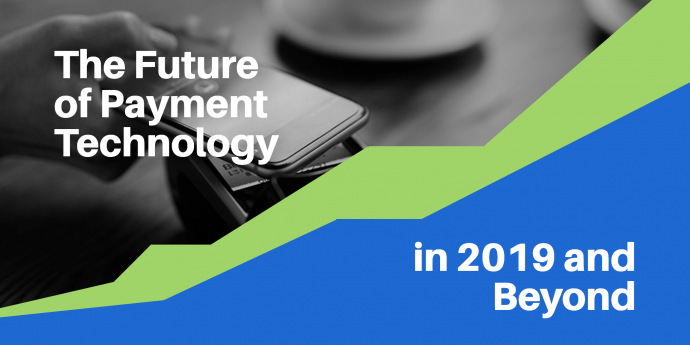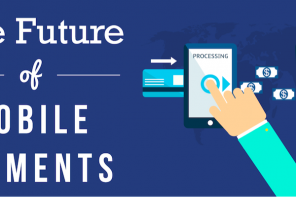Payment technology trends today are shaping the future of merchant services. At the heart of this seismic shift are three core elements: Security, usability, and automation.
What’s driving the greatest change in payment technology in recent years is the emergence of technology companies entering the payments space, including Apple, Samsung, and Google. The lines between what is a payment company, and what is a technology company, has blurred — and the world of payment technology options have become greater than ever.
Both merchants and consumers today have the desire to utilize payment methods that are quick, secure and enhance the overall experience. To help you wade through the crowded world of payments processing technology, we’ve gathered a list of top trends that will be the future of payment technology in 2019 and beyond.
In-Store Mobile Payments
Credit cards will remain king for long into the future, but the form in which that credit card is used will continue to evolve. In-store mobile payments that rely on NFC technology, mobile wallets, and other contactless payment methods is a payment technology trend that is here for the long haul. Industry estimates peg the in-store mobile payment market to be worth $503 billion by 2020.
Enhanced security methods that tokenize payments and allow for consumers to ditch their physical credit cards crosses off two boxes that are important to businesses and shoppers: A desire for more convenient payment methods that are fast and simple and secure to use. This will continue to propel the in-store mobile payment market.
Mobile-Point-Of-Sale Payments
Another extension of the in-store mobile payments market is the rise of the mobile point of sale devices. These devices are equipped to help businesses take their payment needs on the go. Instead of being constrained to brick-and-mortar locations, mobile-point-of-sale payments provide merchants with modern, flexible opportunities to interact with their customers anytime and anywhere. The mPOS market has broken down payment barriers and made it easier for merchants of all sizes to accept mobile and credit card payments.
The mPOS payment experience provides better engagement with customers, and it also enhances the checkout process with more speed and flexibility.
The mPOS market is transforming the future of payment technology by introducing new devices that no longer keep merchants connected to clunky legacy payment systems. Mobile-point-of-sale systems have more opportunities to incorporate customer loyalty programs, capture customer information better and streamline the entire checkout experience. Collectively, this will make the mPOS payment technology continue to gain traction.
Biometric Authentication
Industry data suggests that by 2021, there will be more than 18 billion biometric transactions happening every year. That figure will continue to rise as more devices incorporate biometric technology into how consumers authenticate passwords for more than just payments. Instead of relying on a single method to verify identity, multi-factor authentication that incorporates biometrics is the next big trend to watch in 2019 and beyond.
The future of payments technology is all about perfecting more secure identity authentication. As credit card fraud continues to be a significant pain point for everyone involved in the payments ecosystem, including merchants looking for more advanced ways to verify the legitimacy of a shopper’s identity in order to avoid fraudulent charges that lead to costly chargebacks that can complicate relationships with payment partners.
That’s where biometric authentication is going to be a game-changer for the payment technology market. Instead of relying on traditional credit card payments that often verify identity with a signature or PIN, biometrics takes the security measures to the next level. From fingerprints to faces and even iris scans, this will be the next payment technology trend that redefines how the industry starts to talk about payment security.
NFC Contactless Payments
Beyond mobile payments, the concept of contactless payments that rely on NFC technology will continue to be a trend that expands across the payment technology market. From wearable payment devices to credit cards that allow consumers to pay in a simple tap at the terminal, NFC technology is defining the future of payment technology. Contactless payment trends have already caught on in the public transportation market in major U.S. cities and this trend will expand to more payment options.
AI and Voice Technology
Amazon’s Alexa has begun to change the digital commerce game by introducing an artificial intelligence assistant into the shopping experience. Consumers are now buying into the concept of “voice commerce” where they can simply order and pay using only a few simple commands. AI technology allows consumers to easily shop and pay for items without even having to browse through their device. Instead, thanks to more sophisticated AI and enhanced digital payment methods, shoppers can simply tell a device to order an item for them. Relying on these “assistants” to navigate an easier shopping experience will be a trend that will change how merchants are thinking about their online stores. It’s also going to help evolve digital payment methods that rely on payment details to be stored through secure cloud technology.
Blockchain and Cryptocurrencies
The last payment technology trend is one that’s really taken off in the past few years in the mainstream commerce market. With bitcoin being the leading cryptocurrency that most consumers know about, this is going to be a payment method that more retailers begin to accept as a legitimate payment method. This virtual currency is known for its secure transaction ability since it relies on cryptocurrency to verify the payment itself.
Consumers are now able to pay with bitcoin at major retailers as the trend catches on with consumers who are looking for payment methods that are believed to be more secure and less traceable. Blockchain, which is the technology behind bitcoin, is a distributed ledger that records transactions across a peer-to-peer network through a computer system. Bitcoin itself may not be the future of money, but blockchain technology is certainly getting attention from banks and major payment players. Look for this trend to continue in 2019 and beyond.




